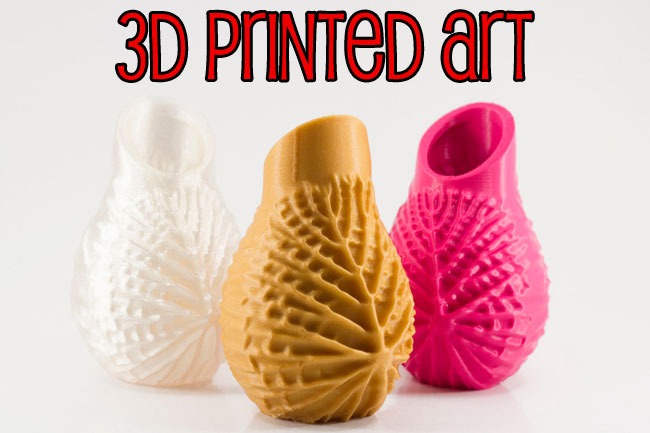
Although often overlooked in a world of technology, art can play an important part in our lives. 3D printing enthusiasts and artists are looking for ways to combine these two passions into one beautiful past time.
Sculptures are one obvious way that 3D printing can be used to make art. One option is to make sculptured versions of famous pieces of art. One couple in London made a 3D version of Van Gough’s sunflowers while the Smithsonian just debuted a 3D printed bust of President Obama.
It’s also possible to take scans of actual paintings and use a 3D printer to recreate them. This gives the finished piece texture identical to that of the original—something you can’t get in poster reproductions.
Musicians have started using 3D printers to create beautifully designed instruments that sound perfect. A college in Sweden boasts its own band that uses only 3D instruments (and they sound pretty good too). Other musicians have printed guitars (electric and acoustic), flutes, violins, whistles, and mouthpieces for various instruments. All of these uses provide a wealth of opportunities that allow for personalization of these instruments that you can’t find anywhere else.
When 3D printing is mixed with film, amazing things can happen. It can help quickly create props for films when CGI can’t work, replacing hours of tedious work that must be done by hand. There were even some 3D printed items in Iron Man 2, helping make up some of Tony Stark’s iconic suit.
It can also be used to help with stop-motion animated films. 3D printing can help make some of the hundreds of tiny pieces that go into making a film like this, saving hours of work time and making the pieces more uniform in shape. The Boxtrolls is the most recent full-length film made with stop-motion animation, and this article gives a good breakdown on how 3D printing helps the process along.
For a shorter example, “Bears on Stairs” is a looping animation that required fifty individual prints to reach two seconds of screen time.
3D printing has also found its way into the world of fashion. Designers have used this technology to create beautiful, flowy dresses that are printed in one piece; shoes that are handmade using 3D printing pens (more on those later), and jewelry that looks like it’s from a movie.
If you consider food to be art, and I definitely think it can be, then the Foodini printer will come as good news. It’s designed to help take the hard work out of cooking healthy food, not make it easier to have unhealthy food on demand. There are many other food printers in development, though, and they can print lots of things: Oreos, Nutella designs, candy, pasta, pizza, chocolate, and even pancakes in fun shapes.
3D printing pens are the handheld versions of 3D printers. The 3Doodler is on the market right now, the LIX pen has been fully funded and is almost ready for preorder, and there are countless others flooding crowdfunding sites. These pens allow for free-form printing by working much the same way a hot glue gun does—the user allows the pen to warm up and feeds strands of plastic into the end. The pen heats the filament and allows the user to extrude the plastic into a fun shape, as long as the plastic is anchored onto a solid surface.
One final way 3D printing can be used for art—even if you don’t agree with me—is through selfies. There are a few ways 3D printing is used to create a selfie. UStatue allows users to upload a picture to create a statue or a bobblehead, using a variety of standard body types. Shapies is working on 3D printing “photo booths” that can create these little statues in just minutes.

